If You Can Do These 3 Balance Tests at 60, Your Body Age Is 20 Years Younger

Do you find yourself hesitating before getting out of bed in the morning or when turning around quickly in the kitchen? After 35 years as a qualified personal trainer, working with thousands of older adults both 1-1 and in group classes, the number one thing I want to help improve is balance. While resistance training is incredibly important for stability and increasing bone density, which can help if a person does fall, great balance drastically reduces the chance of falling in the first place and increases confidence and independence as we age. Read on to discover three simple tests that can reveal if your body age is decades younger than your chronological age.
Why Your Balance Changes After 60
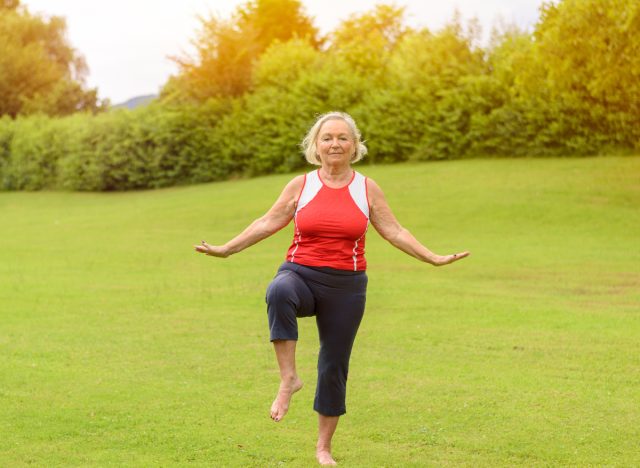
The one I see most commonly is people hesitating before they take a step or turn. Our brains start to second-guess movements that we used to do automatically. You will most likely see it first when you get out of the bed in the morning or when you turn around quickly in the kitchen.
Three main systems start to break down at the same time. Our inner-ear loses some of the sensitivity it has to position changes, our vision processing slows down – especially in low light and our proprioception (the body’s ability to sense where our limbs are in space) becomes less precise. Our reaction times also slow down, when an older adult starts to wobble, their muscles don’t fire as quickly to correct the movement. What would have most likely been an instant recovery when younger, becomes a stumble or fall.
The real issue is that way too many people accept this decline as normal. It really isn’t. Most of what we call age-related loss of balance actually comes from lack of use. Our balance systems need regular challenges to stay sharp.
How Balance Tests Reveal Your True Body Age
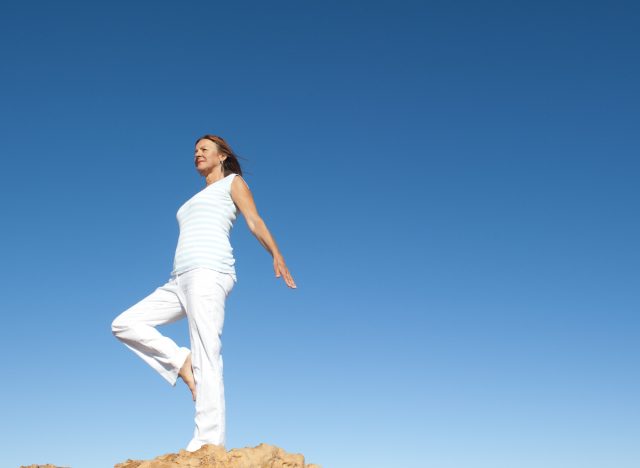
Balance is a super accurate predictor of biological age as it requires multiple systems in our bodies to work together perfectly. Someone who is 70, with excellent balance, will often have the physical capability of a person 20 years younger.
Our balance reflects our nervous system health, our muscle strength, our joint mobility, and our reaction speed all at once. When even one of these systems starts to decline – our balance is immediately impacted. A person might feel fine but still fail a simple balance test as hidden weaknesses are revealed before they manifest as obvious problems.
Research shows that people who can stand on one leg for 10 seconds have significantly lower mortality rates than those who can’t. Your balance is literally a window into your overall health and longevity prospects.
3 Balance Tests at 60 That Reveal Your True Body Age
Single Leg Stand
Stand next to a wall or sturdy chair for safety. Lift one foot off the ground, keeping your thigh parallel to the floor. Keep your standing leg straight, arms at your sides. Start timing immediately.
You should hold this for 60 seconds if you’re under 50, 45 seconds if you’re 50-59, 30 seconds if you’re 60-69, and 15 seconds if you’re over 70. If you can exceed these times significantly, your balance age is younger than your chronological age.
This test measures your proprioception and single-limb strength. It shows how well your body can maintain stability when your base of support is reduced by half.
Easier option: Keep your lifted foot touching your standing ankle rather than lifting your thigh. Or lightly touch the wall with one fingertip for minimal support.
Stop immediately if you feel dizzy, experience chest pain, or have sharp joint pain anywhere.
Tandem Walk
Place your right foot directly in front of your left, with your heel touching your toe. Take 10 steps forward in this heel-to-toe pattern, then turn around and take 10 steps back. Keep your eyes looking straight ahead, not down at your feet.
You should complete this without stepping sideways, using your arms excessively for balance, or pausing between steps. The movement should be smooth and controlled throughout.
This test measures your dynamic balance and coordination. It simulates the balance challenges you face when walking on uneven surfaces or in crowded spaces.
Easier option: Allow a slight gap between your heel and toe, or perform the test next to a wall for emergency support. You can also start with just 5 steps each direction.
Stop if you feel like you’re going to fall, experience dizziness, or have knee or ankle pain during the movement.
Eyes Closed Balance
Stand with your feet together, arms crossed over your chest. Close your eyes and maintain this position without swaying or opening your eyes.
You should hold this for at least 30 seconds. Many people are shocked at how much harder balance becomes without vision – it reveals how much you rely on your eyes to compensate for other balance deficits.
This test measures your vestibular system function and proprioception without visual input. It shows whether your inner ear and body position sensors are working properly.
Easier option: Stand with your feet slightly apart or keep your eyes open but look at a fixed point on the wall. You can also perform this test sitting in a chair initially.
Stop immediately if you feel extremely dizzy, nauseous, or disoriented. These could indicate inner ear problems that need medical attention.
How Often You Should Test Your Balance
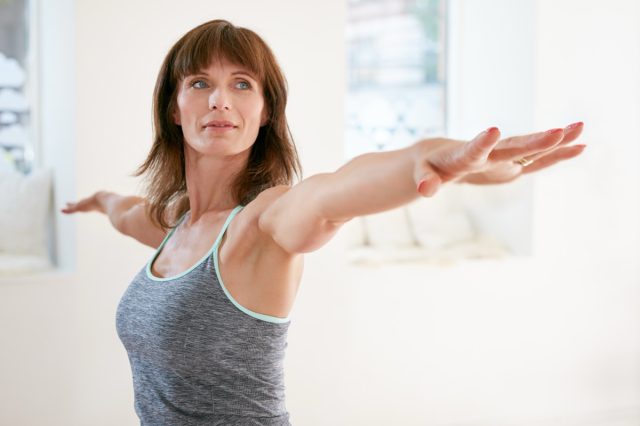
Test your balance weekly when you’re actively working on improvement. Once you’ve reached your goals, monthly testing is sufficient to maintain awareness of your progress.
Your balance can improve rapidly with practice – much faster than strength or endurance. You might see improvements in just days, which makes frequent testing motivating rather than discouraging.
Keep a simple log of your times and performance. Note any factors that might affect your results like fatigue, recent illness, or medication changes. This helps you understand your patterns and celebrate real improvements.
Daily Habits That Keep Your Balance Young
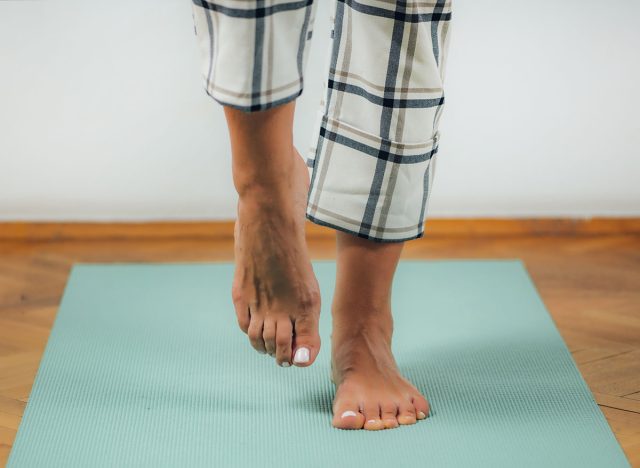
Practice standing on one foot while doing routine activities. Brush your teeth standing on one leg, or stand on one foot while waiting for your coffee to brew. These micro-practices add up significantly over time.
Walk heel-to-toe whenever you’re walking short distances at home. From your bedroom to the bathroom, or from the kitchen to the living room. Make it automatic rather than a formal exercise session.
Challenge your balance system regularly by walking on different surfaces. Grass, sand, gravel, or even thick carpet all require different balance responses than smooth floors.
Spend time moving your head while maintaining balance. Look up, down, and side to side while standing or walking slowly. This trains your vestibular system to function while your head position changes.
Practice getting up from chairs without using your hands. This builds the leg strength and balance coordination you need for fall prevention.
What It Means If You Pass All Three Tests
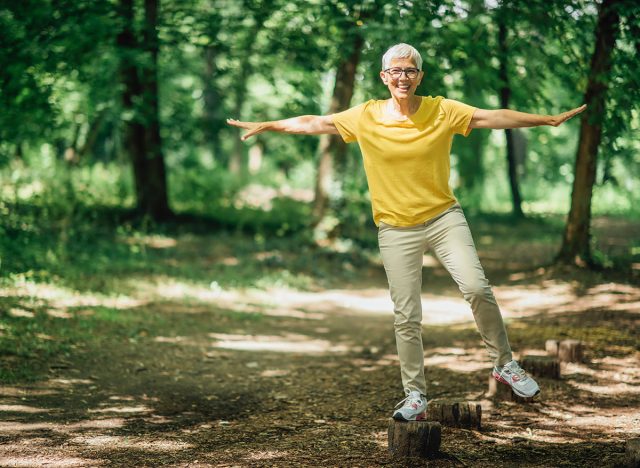
Passing all three tests indicates that your nervous system, muscle strength, and sensory systems are functioning well above average for your age. This translates to a lower fall risk, better mobility preservation, and greater independence as you age.
Research consistently shows that good balance correlates with a longer lifespan and better quality of life in later years. You’re more likely to stay active, maintain social connections, and avoid the cascade of problems that often follow serious falls.
Your brain health is likely excellent too. Balance requires rapid processing and integration of multiple information sources. Good balance often indicates sharp cognitive function and healthy neural pathways.
However, passing these tests doesn’t make you invincible. Continue challenging your balance regularly to maintain these capabilities. Physical abilities decline quickly when you stop using them.
What to Do If You Can’t Complete These Tests Yet
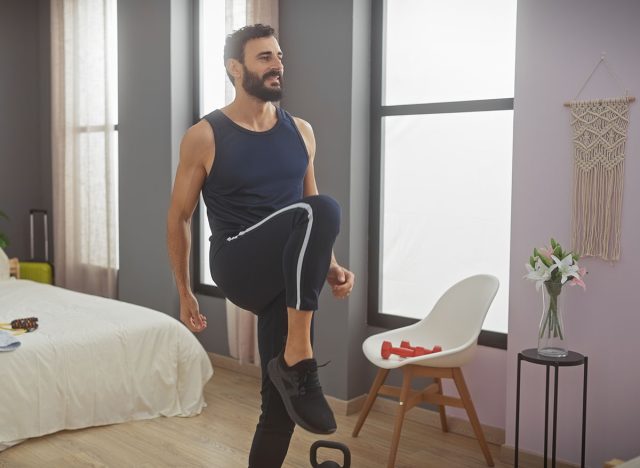
Start with the easier versions immediately. Progress isn’t about perfection – it’s about consistent practice. Even holding a single leg stand for 5 seconds is better than not trying at all.
Focus on one test at a time rather than trying to master all three simultaneously. Spend two weeks working primarily on single leg stands, then add the tandem walk, then incorporate eyes-closed practice.
Consider working with a physical therapist if you can’t perform any version of these tests safely. They can identify specific deficits and create a progression plan that addresses your individual limitations.
Don’t let current limitations discourage you. Balance improves at any age with consistent practice. I’ve seen 80-year-olds develop better balance than sedentary 50-year-olds through dedicated effort.
Remember that improving your balance reduces your risk of falls more than any other single intervention. The time you invest now pays dividends in maintaining your independence and confidence for years to come.
Looking for more easy ways to lose fat? Here’s How Long Your Walking Workout Should Be To Shrink Belly Fat.